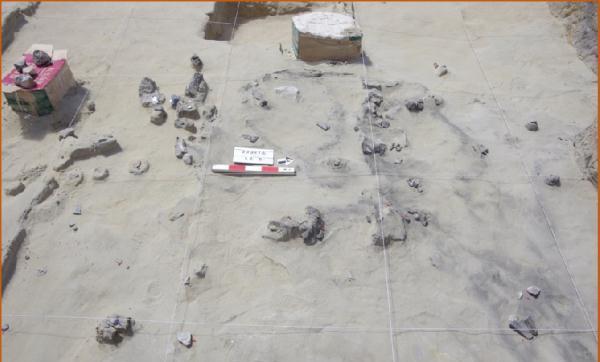Focusing on the important archaeological discoveries and research progress of the Tibet Autonomous Region, the State Administration of Cultural Heritage held an important progress work meeting on the major project of "Archaeology in China" on the 13th, and reported four important archaeological achievements such as the Chere Site, the Mahoe Site, the Gebu Sailu Site, and the Dangxiong Cemetery.
The Chere Site in Gar County is a Paleolithic wilderness site in the early Holocene, archaeology has found continuous accumulation of cultural layers, excavated more than 5,000 relics mainly of stone products, and found fire ponds, ash pits and other human activity remains. More than 2,000 relics have been excavated in a dense distribution area of stone products, speculated to be the remains of ancient people making stone tools and buried in situ, and the two types of stone tool technology found in the stone chip industry and the fine stone leaf industry are speculated to be the remains of human activities in two different periods, indicating that ancient humans have experienced at least two repeated occupation processes in this area, filling the gap in the prehistoric archaeological culture of the hinterland of the Qinghai-Tibet Plateau from 8,000 to 10,000 years ago.

The Maliang Ruins in Kangma County is a prehistoric settlement site dating back about 4,000 years, archaeology has found fire pits, tombs and other remains of human life, and excavated stone tools, pottery, bone tools, mussel ornaments, talc beads, jade pipe beads and other relics. The site represents a new type of archaeological culture, which is of great significance for establishing the sequence of prehistoric archaeological cultures in Tibet and exploring the extreme environmental processes and strategies for human adaptation to high cold and lack of oxygen.
The Gbusairu Ruins in Zada County is a site from the Late Bronze Age to the Early Iron Age. The early and late tombs were discovered, which are of great value for the study of the exchange and migration of people in the Xiangquan River Basin, and the formation and development of regional cultures.
Dangxiong Cemetery in Dangxiong County is a burial ground from the Tubo period. Archaeology found 52 sealed earth tombs, unearthed gold and silver, beads, pottery, Go and other types of utensils more than 300 pieces (sets), dangxiong cemetery archaeological work further revealed the tubo culture of funerary customs and systems, unearthed stone black and white Go pieces, lacquer fragments, textiles, etc. showed a close connection with the Central Plains culture, is an important evidence of the exchange and integration of various ethnic groups.
Reporter: Shi Yuchen
Image courtesy of the State Administration of Cultural Heritage
Source: Xinhua News Agency